Shrine Church
A Brief History of the Construction
Sitting at the heart of Martyrs' Shrine overlooking the Wye Valley and the original mission site of Sainte-Marie I, is the Shrine Church or the Church of St. Joseph.
The Shrine Church that we know today honouring the Canadian Martyrs was the successor to a much smaller site built in Waubaushene, Ontario. In June of 1925, the Jesuits of Canada purchased the current site and construction of the Shrine Church began later that year. With a vision of creating a continuation of the first church built in Ontario, the Church of St. Joseph located at Sainte-Marie among the Hurons, and the help of a $20,000 bank loan (around $330,000 in today's money) and donated local lumber, Father John M. Filion, then the Provincial Superior of the Jesuits Fathers of Upper Canada was able to initiate the build.
On June 26, 1926 the Shrine Church was completed and the first Mass was held. 10,000 people arrived from across the province by train, car and horse and buggy to participate.
Distinct Canadian Architecture
Aiming to resemble a 'French Canadian country church' with a stylized Gothic Revival limestone exterior and the incorporation of a delicate wooden interior details, the Shrine Church tastefully combines Indigenous and European design. This design choice is both traditional from both cultures and is distinctively Canadian.
European-Styled Exterior
The exterior of the Shrine Church is most recognized by the impressive twin Belgian-Gothic bell towers whose spires appear to stretch high into the skyline. The massive and thick white limestone façade communicates a feeling of permanence in the landscape. Geometric rose and lancet windows, perforated corbelling and tin finials adorn the cross-shaped building creating a stately and architecturally pleasing structure visible from miles away.
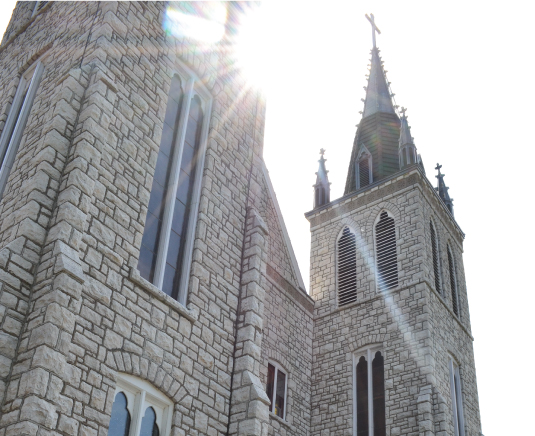
Indigenous-Styled Interior
Modelling off of the original church at Sainte-Marie, the interior walls were intended to be faced with birch-bark, which by 1925 was far too impractical given the supply. Instead, builders used one of the earliest forms of plywood used in Canada, made of cottonwood (Lamatco) imported from British Columbia. Delicate floral motifs fill the church and together with the use of natural lighting, attempts to bring nature indoors. The unique ceiling shape is made to resemble an inverted canoe – an essential part of daily Indigenous life in the seventeenth century and a symbol of protection. The strapping used over the cottonwood interior is made to resemble the Wendat (Huron) longhouse, for which the martyrs lived as they missioned out into the local villages.
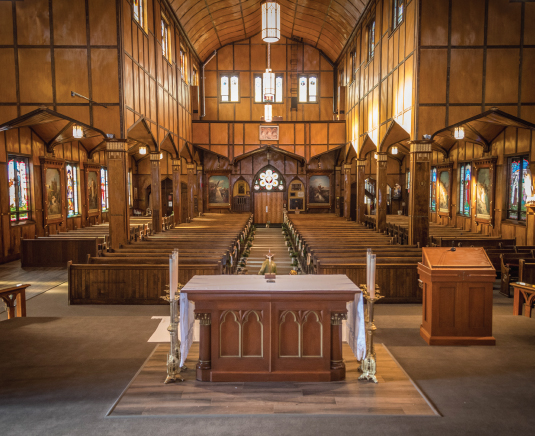
The Relics
The Shrine Church houses two primary reliquaries, or vessels containing the saintly relics, or physical earthly remains of the Canadian Martyrs, including the skull of St. Jean de Brébeuf.
Saintly Relics
In the Roman Catholic tradition, the relics of saints are venerated as physical, tactile parts of people believed to already be in heaven praying for us. When an individual prays to God before a relic, is believed to be the pilgrim's invitation for that saint to join them in prayer. These relics are, from a spiritual perspective, one of our most special gifts that allow visitors to further grow in their spiritual lives.
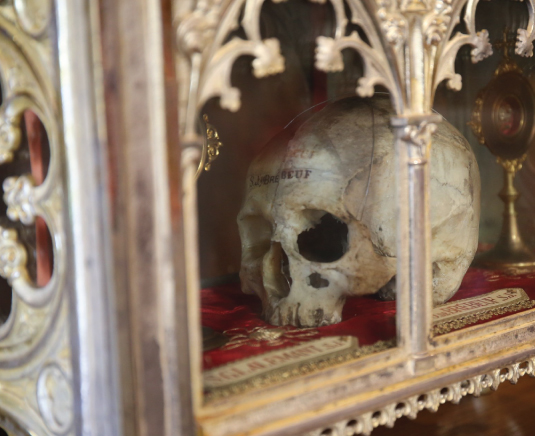
Healing and Prayer
Hundreds of thousands of pilgrims and visitors have visited Martyrs' Shrine seeking mental and physical healing through prayer and with the intercession of the martyrs. Many people belief that their ailments have been cured through prayer and have left behind relics of their afflictions as symbols of their healing (e.g., crutches, braces, hearing aids, etc.). These personal relics adorn the walls of the Shrine Church as a reminder to us of the power of faith, prayer and community.
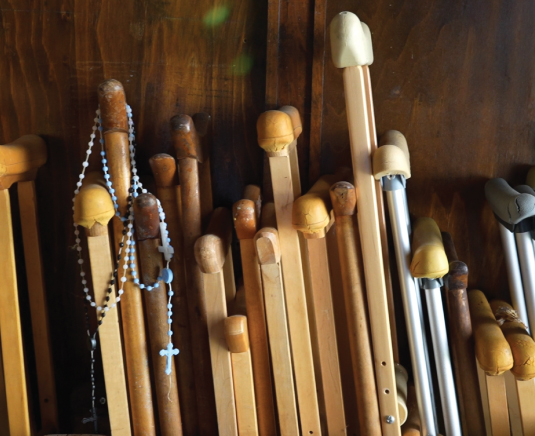
Spiritual Art
The Shrine Church and grounds of Martyrs' Shrine contain an impressive collection of ecclesiastical art and monuments that invite pilgrims to reflection and prayer. The architecture and artistic embellishments of the Church of St. Joseph, both inside and out, express aspects of the unique encounter between the early Jesuit missionaries and the Wendat (Huron) people.
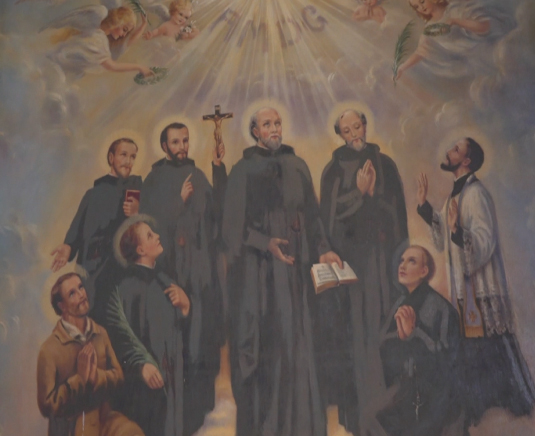
Paintings
Perhaps most special to this site is the famed oil depiction of the Canadian Martyrs painted by Mother Mary Neilis in 1924 located in the right transept of the church underneath the south-facing rose window.
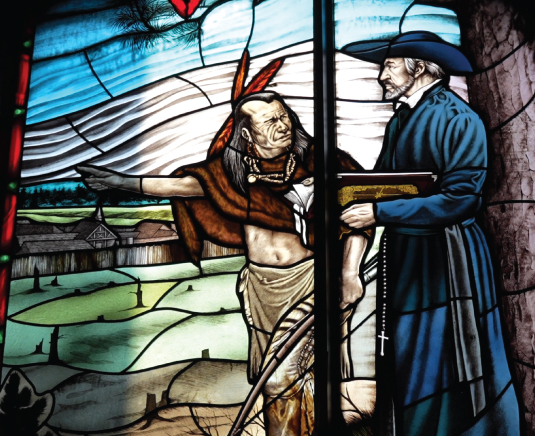
Stained Glass
The Shrine Church contains many commissioned and donated stained glass pieces, including this depiction of Jesuit missionary Jean de Brébeuf and Joseph Chiwatenhwa overlooking the mission of Sainte-Marie.
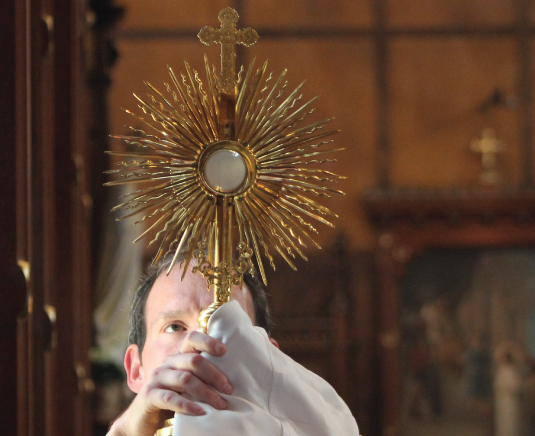
Religious Artifacts
In addition to traditional one-of-a-kind art pieces, the Shrine Church houses many religious artifacts used during various services, including the monstrance shown here during eucharistic adoration.
"These I will bring to my holy mountain, and make them joyful in my house of prayer; their burnt offerings and their sacrifices will be accepted on my altar; for my house shall be called a house of prayer for all peoples.” - Isaiah 56:7
